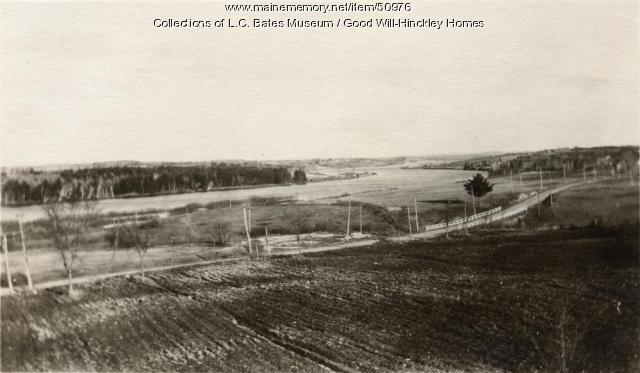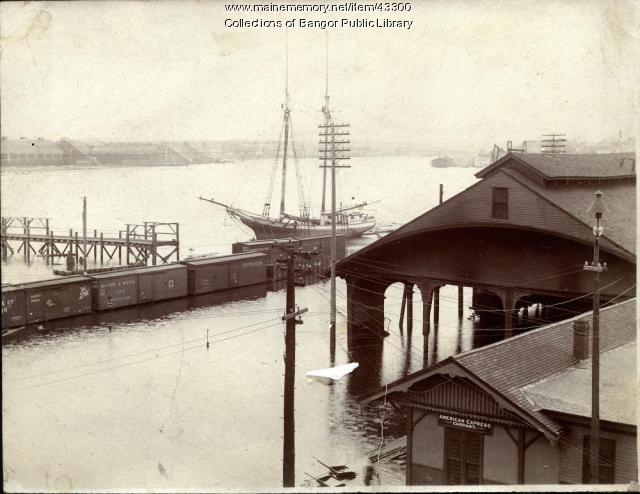Keywords: river
Item 25720
Summary of river condition, Lewiston, 1948
Contributed by: Edmund S. Muskie Archives and Special Collections Library Date: 1948 Media: Ink on paper
Item 52176
Kennebec River, Skowhegan, 1918
Contributed by: L.C. Bates Museum / Good Will-Hinckley Homes Date: 1918 Location: Skowhegan Media: Photographic print
Item 150158
Dead River Company service station alterations, Calais, 1947
Contributed by: Maine Historical Society Date: 1947 Location: Calais Client: Dead River Company Architect: Eaton W. Tarbell
Item 150173
Dead River Company service station alterations, Houlton, 1946
Contributed by: Maine Historical Society Date: 1946 Location: Houlton Client: Dead River Company Architect: Eaton W. Tarbell
Exhibit
Student Exhibit: Logging on Kennebec River
I became interested in the Kennebec River log drive when my grandfather would tell me stories. He remembers watching the logs flow down the river from his home in Fairfield, a small town along the Kennebec River.
Exhibit
Walter Wyman's vision to capture the power of Maine's rivers to produce electricity led to the formation of Central Maine Power Co. and to a struggle within the state over what should happen to the power produced by the state's natural resources.
Site Page
Life on a Tidal River - Narrative
"The confluence of the Kenduskeag River with that of the Penobscot River beckoned development. Yet, it would be more than a hundred and fifty years…"
Site Page
Life on a Tidal River - Welcome
"… Bangor from the east bank of the Penobscot River, ca. 1905Bangor Public Library Welcome! to the Bangor Community Heritage Project."
Story
Restoring the Penobscot River
by John Banks
My role as the Director of the Department of Natural Resources for the Penobscot Indian Nation
Story
Hand carrying water in Marshfield
by Dorothy Gardner
Ways of getting water in rural Maine. From fetching water from a stream to having a well.
Lesson Plan
Wabanaki Studies: Stewarding Natural Resources
Grade Level: 3-5
Content Area: Science & Engineering, Social Studies
This lesson plan will introduce elementary-grade students to the concepts and importance of Traditional Ecological Knowledge (TEK) and Indigenous Knowledge (IK), taught and understood through oral history to generations of Wabanaki people. Students will engage in discussions about how humans can be stewards of the local ecosystem, and how non-Native Maine citizens can listen to, learn from, and amplify the voices of Wabanaki neighbors to assist in the future of a sustainable environment. Students will learn about Wabanaki artists, teachers, and leaders from the past and present to help contextualize the concepts and ideas in this lesson, and learn about how Wabanaki youth are carrying tradition forward into the future.
Lesson Plan
Grade Level: 6-8, 9-12, Postsecondary
Content Area: Science & Engineering, Social Studies
This lesson presents an overview of the history of the fur trade in Maine with a focus on the 17th and 18th centuries, on how fashion influenced that trade, and how that trade impacted Indigenous peoples and the environment.


















